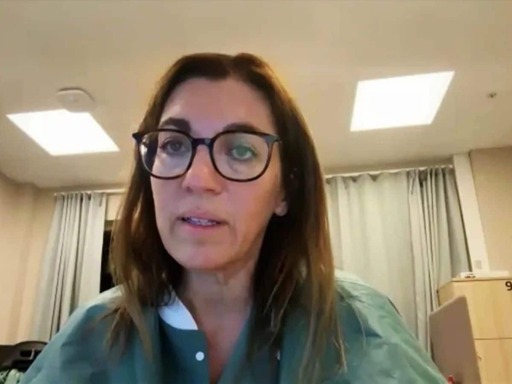Norwegian doctor Nil Ekiz, who is of Turkish origin, described the scenes she witnessed during her work in Gaza as “worse than horror films,” stressing that the humanitarian tragedy there cannot be expressed in words and will remain etched in her memory for the rest of her life.
In an interview with Anadolu Agency, Ekiz explained that she worked at Nasser Hospital in Khan Yunis last September as part of a medical mission with a Norwegian organisation. She entered the Strip with a team of four doctors after lengthy and complicated coordination procedures.
She said:
From the moment we entered Gaza, we saw destroyed houses, wrecked cars and rubble everywhere. Children ran towards our car, pointing to their mouths because they were so hungry. Not a single building was intact; the destruction was total.
Norwegian doctor: Patients on the floor and a shortage of medicine
The Norwegian doctor pointed out that Nasser Hospital, which normally has a capacity of around 340 beds, was treating more than 800 patients at one time.
People were sleeping on the floor, in the corridors, in front of the lifts, and even on the stairs. Most of them had been wounded by bullets or shrapnel, while patients with chronic diseases were dying in their tents without treatment.
She described a severe shortage of medicines and medical supplies, stressing that
even basic anaesthetics were not available, and simple painkillers such as paracetamol were scarce. Patients were screaming in pain after surgery.
In many cases, doctors were forced to discharge patients despite their urgent need for care due to the severe overcrowding.
One-third of the victims were children
Ekiz said she met a forensic doctor in Gaza who told her that 30% of those killed were children.
The youngest child I saw was six years old. She was shot in the chest and the bullet pierced her stomach. Despite our attempts to save her, she died.
She explained that most of the casualties were civilians who had gathered at food distribution points, and eyewitnesses confirmed that Israeli forces deliberately targeted those areas.
In the intensive care units, I saw children aged three, five and seven with head injuries, and young people with serious wounds that were not healing due to malnutrition and infection.
Medical staff inject themselves with solutions
The doctor described the dire conditions faced by health workers, saying that doctors and nurses were living in tents near hospitals, most having lost between 15 and 20 kilograms due to hunger and exhaustion.
Medical staff were forced to inject themselves with solutions to continue working. Many of them have lost their families and children, yet they continue to perform their humanitarian duty in unbearable conditions.
She recounted a particularly painful story:
The father of a child with a head injury came to me begging me to take him to Norway to save him, but he died a few days later. That feeling of helplessness in the face of death is indescribable.
‘What is happening in Gaza is not a war’
When asked whether Israel was deliberately targeting children, Ekiz replied:
I haven’t seen it myself, but when you see that a third of the victims are children, you realise that it cannot be a coincidence. This does not happen in a normal war.
She concluded:
I will return to Gaza early next year to continue my humanitarian work. It is our duty to tell what we have seen so that what happened will not be forgotten.
Two years of extermination
On 8 October 2023, Israel launched a campaign of genocide against the inhabitants of the Gaza Strip, with American support, which lasted for two years. It included killing, starvation, destruction and forced displacement, resulting in the martyrdom of 68,643 Palestinians and the injury of 170,655 others, most of them children and women.
Featured image via the Palestinian Information Center
By Alaa Shamali
From Canary via this RSS feed
Pure evil


